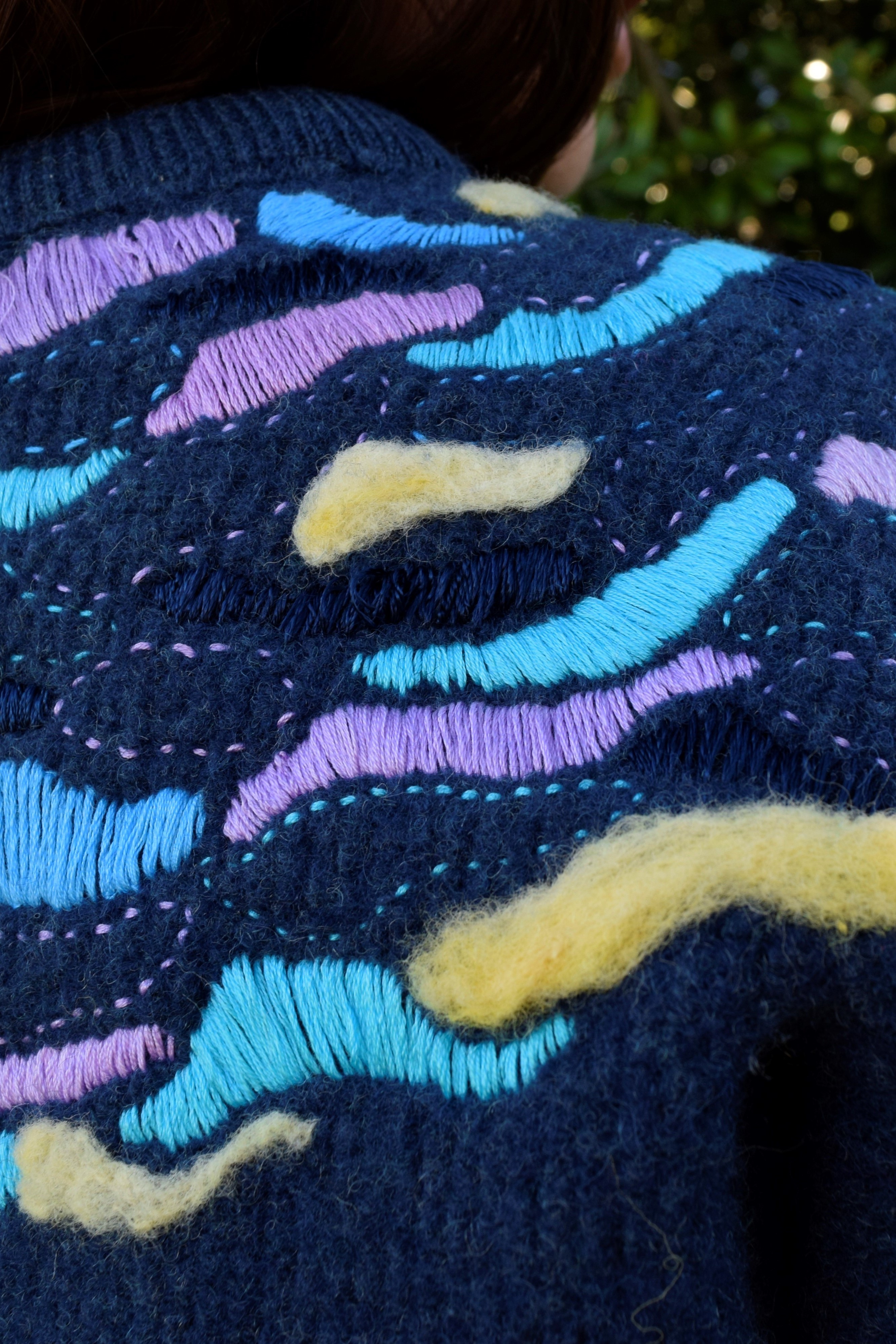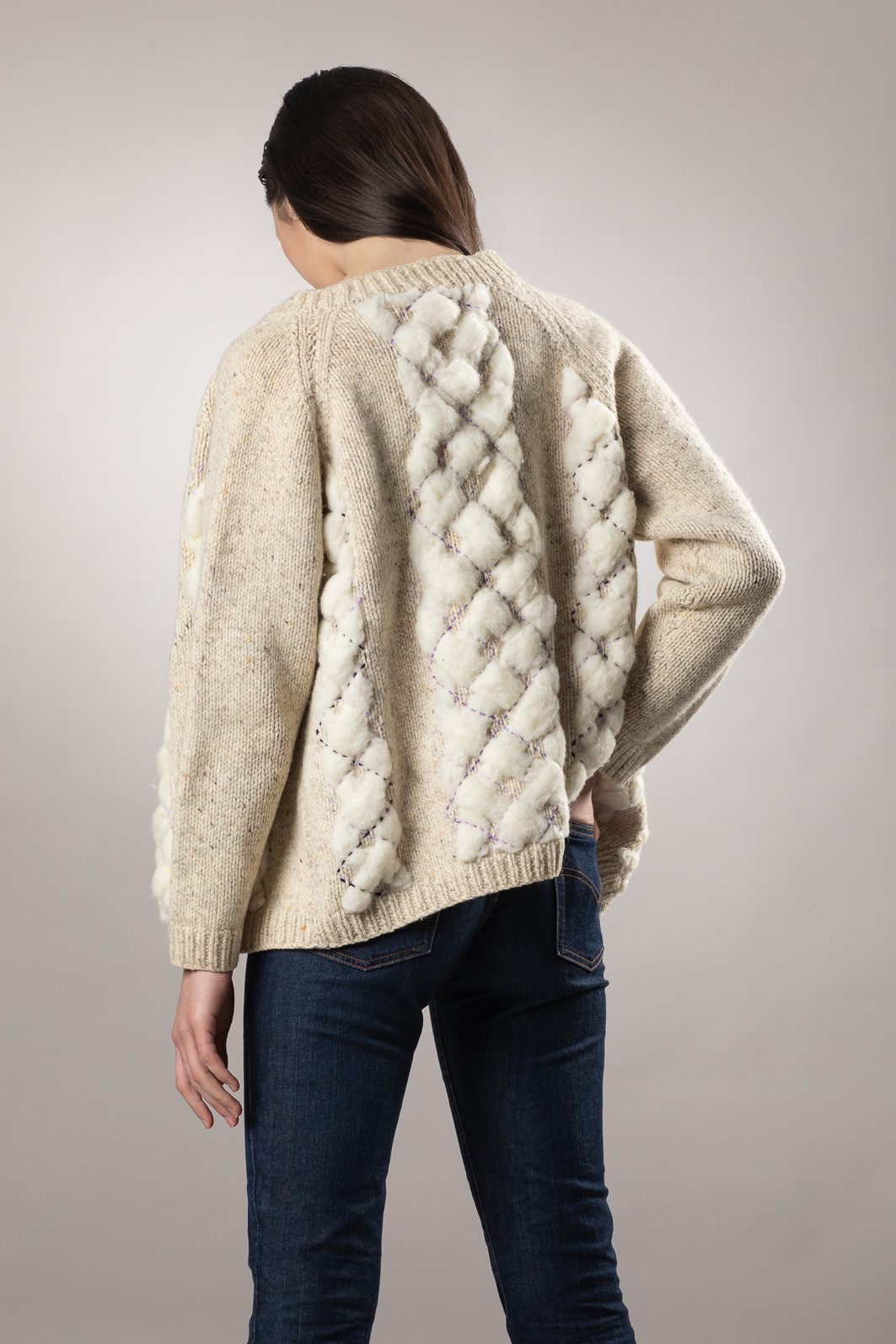
Fiona Bongartz
SLOW CRAFT
Celebrating garment use through craft that takes time.
In this project, I wanted to approach sustainability from a use-perspective. Research of consumers tells me that if they have the skills and knowledge to use a garment extensively, replacement purchases can be delayed and reduced. However, clothing knowledge is passed on less and less due to the disposable nature of today’s fashion. Therefore, I set out to develop a range of jumpers which utilise and celebrate craft. I was inspired by my own experience of learning to make and mend garments with my grandmother growing up and her resourceful and creative spirit. I drew on themes of heritage to inform what I view as the future of clothing use and sustainable fashion.
Since the beginning of my studies, I have always been aware of the negative impact of the fashion industry on our planet. According to Jacinta Fitz-Gerald (personal communication, May 1, 2020), sustainability strategist from the Make Good organisation, global fashion production has doubled since 2000. With such growth comes greater responsibility and impact on the environment. Often sustainable approaches focus purely on textile production, and neglect to examine how sustainable changes can be when the garment is in use. I wanted to focus on discovering ways to change garments to make them more sustainable by encouraging extensive use by the consumer. The way that the consumer uses the garment will have a major effect on the garment's sustainability, as prolonged use can balance unsustainable production methods by delaying and reducing replacement purchases (Fletcher, 2012).
Through her research, Kate Fletcher, leading sustainable fashion researcher at the London College of Fashion, found that what made garments last and what led to satisfying use for consumers was the ability to interact and mend garments. She calls this ability 'Craft of Use' and defines it as "a set of skills, ideas and identifiable practices that are conducive to promoting the satisfying use of garments." Use practices can be anything from mending and repairing to garment sharing. Once learned, these skills can be transferred to any future garments and hopefully create longer-lasting relationships between consumers and their clothes. Therefore, it will benefit the sustainability of not just one specific collection but of all future purchases the user makes.
The 'Mend and Make do Movement' implemented by the British government during World War 2 is a great example of how use-knowledge passes on through generations. I was fortunate to have my grandmother who taught me to sew as well as other crafts, from a young age. This had a huge impact on my relationship and ability to interact with clothes throughout my life. This was in stark contrast to my peers growing up and even today of whom many do not even know how to sew on a button. The Mend and Make Do movement has continued to experience revivals, especially during times of economic downturn such as the one we are facing today (Pitogo, 2014). Therefore, it is likely that we will see another spike in interest in mending and altering practices in the coming years.
In response to my research, I developed a product range which utilises crafts and techniques which are accessible and require few tools and space, even being able to be done while sitting in bed. They do, however, require time and patience which builds a bond between the person and the garment and exemplifies the ideas expressed in Fletchers ‘Craft of Use’.
References:
Pitogo, H. (2014, August 13). The ‘Make Do and Mend’ Ideology of the Great War. Retrieved from War History Online: https://www.warhistoryonline.com/war-articles/make-do-and-mend-ideology-great-war.html
Fletcher, K., & Grose, L. (2012). Fashion & Sustainability: Design for change. Laurence King Publishing.




